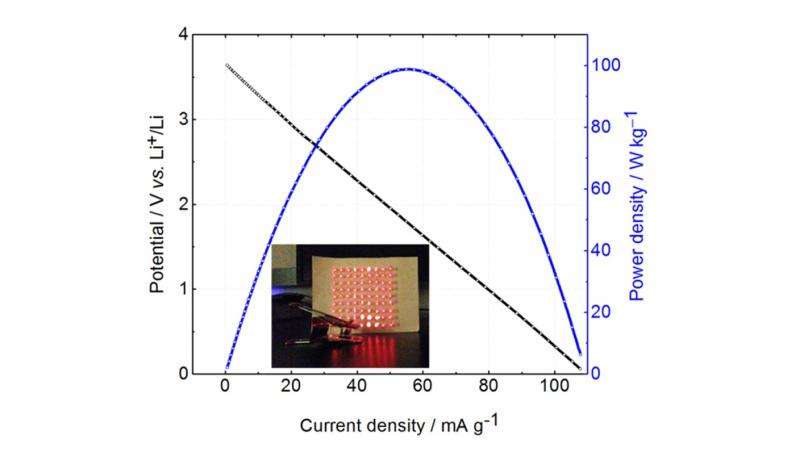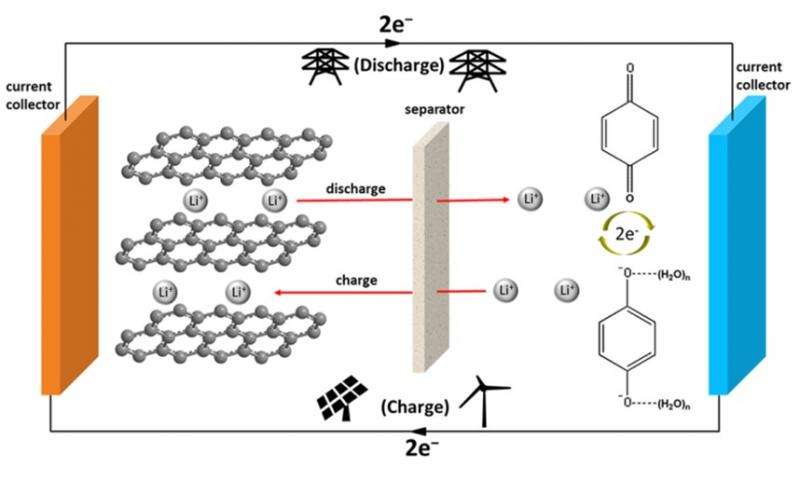March 25, 2016 report
Liquid battery made of biomass could store energy from wind and solar power

(Tech Xplore)—Researchers have designed a liquid battery whose catholyte is made of an organic solution, hydroquinone, which is part of the quinone family that can be extracted directly from biomass such as certain plants. The bioinspired battery can overcome some of the limitations facing conventional liquid batteries, resulting in a higher output voltage and lower cost. One of the main applications of liquid batteries is storing the energy produced by wind and solar power.
The researchers, Yu Ding and Guihua Yu at the University of Texas at Austin, have published a cover paper on the bio-inspired liquid battery in a recent issue of Angewandte Chemie.
It's not too surprising that hydroquinone makes a good battery material, since quinones are widely used in nature for electron-transfer processes, such as in photosynthesis. Other quinone structures have previously been investigated for use in liquid batteries, but the new study shows that hydroquinone is especially appealing because of its small size, high voltage, natural abundance, and the fact that is already used in industry for other applications, such as plastics and cosmetics.
In the new battery design, the researchers combined hydroquinone with graphite as the anode instead of the more commonly used lithium, producing a metal-free battery. This combination avoids the environmental issues related to using metals and the dendrite problem that often plagues lithium-based batteries.
One of the biggest advantages of the new battery is its high output voltage, which is desirable because it allows the stored energy to be used quickly as needed. In conventional flow batteries, the chemical reactions usually take place in water, which inherently limits the maximum output voltage to 1.23 volts. The new bio-inspired battery increases this maximum output voltage to 3.4 volts by taking advantage of the potential discrepancy between hydroquinone and graphite, as well as the liquid form of the reactants.

The high output voltage, in turn, contributes to a high energy density (60 Wh/L) and high specific capacity (456 mAh/g), meaning the battery can store a large amount of energy in a given volume. Both values are among the highest for a liquid battery reported so far. The bio-inspired battery also has a power density (100 Wkg) comparable to that of other reported liquid batteries, and the researchers believe it can be further improved in the future.
Currently, the biggest challenge facing this novel liquid battery is to further improve the energy density, which is necessary for practical applications. In addition, the researchers are trying to replace the solid electrolyte membrane with more cost-effective separators.
More information: Yu Ding and Guihua Yu. "A Bio-Inspired, Heavy-Metal-Free, Dual-Electrolyte Liquid Battery towards Sustainable Energy Storage." Angewandte Chemie. DOI: 10.1002/anie.201600705
© 2016 Tech Xplore

















